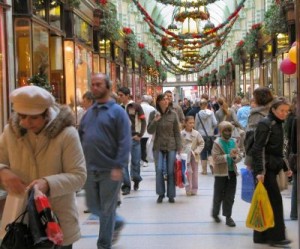 Holiday sales in the U.S. saw a growth of less than half after the Washington gridlock over the fiscal cliff helped sour consumers’ moods and shopping was disrupted due to Hurricane Sandy.
Holiday sales in the U.S. saw a growth of less than half after the Washington gridlock over the fiscal cliff helped sour consumers’ moods and shopping was disrupted due to Hurricane Sandy.
Between the end of October and December 24, retail sales grew by just 0.7%. Sales increased 2% during the same period last year. Americans became anxious due to the problems in Washington with the fiscal cliff that could mean increases in taxes and cuts to the budget.
In addition, Hurricane Sandy helped to interrupt shopping after it hit the east coast of the U.S. in the latter part of October. In November, retailers such as Target and Macy’s posted lower than expected sales for same stores.
In December, consumer confidence fell to a new low of five months according to a report from the University of Michigan/Thomson Reuters consumer sentiment index that showed a drop to just 72.9 from November’s 82.7, which is the weakest it has been since July.
Twenty-four percent of all consumer spending takes place in the Northeast and Mid-Atlantic region and those areas shrank by 1.4% and 3.9% respectively during the period from late October to December 24.
Luxury sales were also pulled down due to the hurricane. The New York region accounts for 20% of overall luxury purchases.
